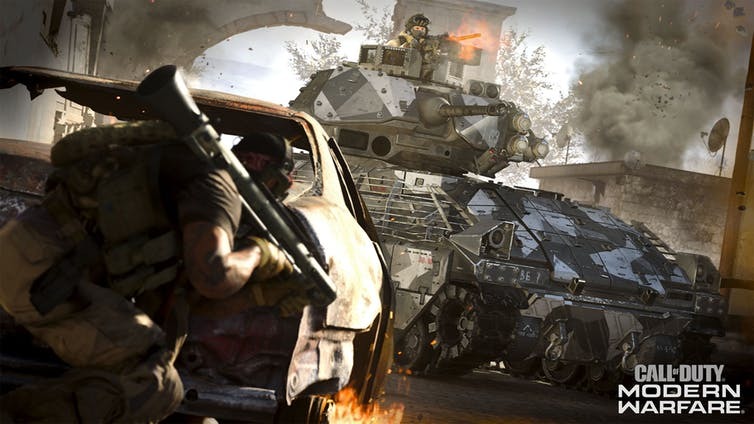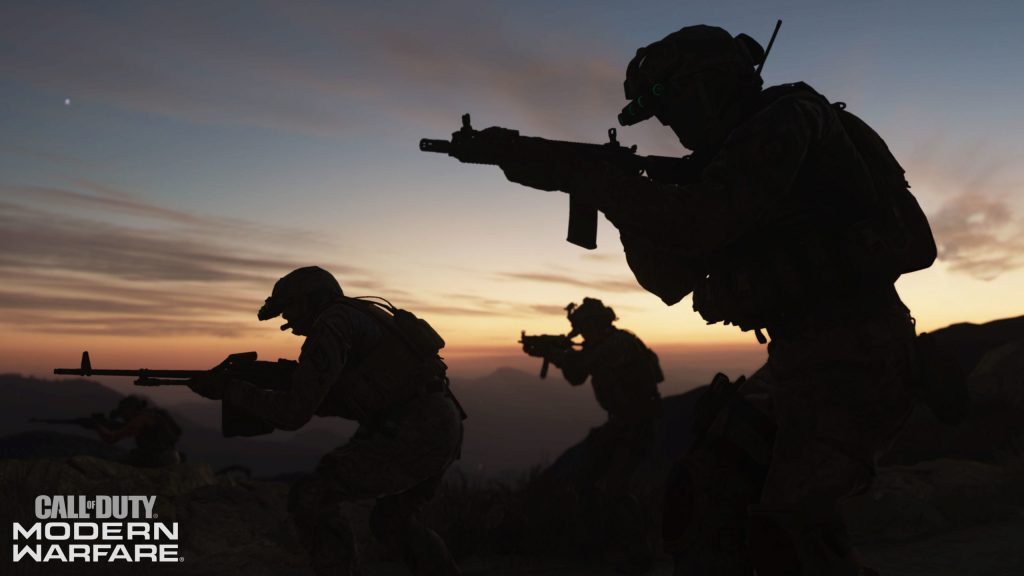Call of Duty is one of the most successful franchises in video game history, but there are currently calls to boycott its latest release due to the game’s depiction of military conflict. Call of Duty: Modern Warfare (2019), released in October, accrued more than $600m in its opening weekend, more than double that of the record breaking weekend had by the movie Joker. It has received backlash due to giving players the chance to use white phosphorus, a chemical weapon, and for its mishandling of global politics, especially its questionable depiction of Russia.
The controversy surrounds a scenario in the game called “Highway of Death”. The player, as an embedded CIA operative overlooking a Middle Eastern desert highway, is told how “The Russians bombed it … killing the people trying to escape”. The scenario resembles an incident in the 1990-1 Gulf War, also called the “Highway of Death”, when the United States and its allies attacked a large retreating Iraqi convoy on Highway 80 that resulted in mass casualties, and later, accusations against the American military for undue force.
But the game crucially places Russians, rather than Americans, as responsible for the killing. This allusion to a Russian-made atrocity has led to accusations against Activision, the game’s production company, for blatant Russophobia. In a predictable clash between an American developer and the Russian media, the game has been denounced by Russian journalists and gamers as pure US propaganda.
This is not the first time the Call of Duty series has provoked controversy. In 2009, an earlier version of the game featured a level called “No Russian” in which the player takes on the role of a CIA undercover agent, actively assisting a terrorist cell in a massacre of civilians at a Russian airport. Controversy does little to negatively impact sales, with avid gamers undeterred by the bad press.
The complexity of war
In defence of the game, Call of Duty: Modern Warfare is mostly set in the fictional country of Urzikstan. Activision makes no claim to historical accuracy, stressing that the game does not represent real-world events.
Drawing on a range of recent conflicts as well as terrorist attacks, the game is clearly not a simple reworking of the Iraq War. Its developer Infinity Ward has consistently drawn attention to the way in which the game draws inspiration from real-life events, but creates its own narratives.
Call of Duty is not the war-glorifying game you might expect. Rather, it sets out to depict the “moral complexity” and “burden” of military life. In-game characters highlight the ambiguity of modern warfare, asking “where do we draw the line?” when faced with escalating violence, and recognising themselves as “killers” but equally “pawns”. Quotes from Hannah Arendt and Aristotle flash up on screen to add to the intellectual gravitas.
The Highway to Death sits alongside a range of uncomfortable moments that underline the visual horror of war. They include an operative throwing an innocent civilian, straitjacketed with explosives, to his death during a terrorist attack on London as well as a waterboarding scene with the player cast as victim, and two young children forced to defend themselves from an attacker in their own home.
Meanwhile, the game’s depiction of Russians is more nuanced than critics claim. A caricature Russian villain, General Barkov, is identified as a renegade officer acting outside of Kremlin jurisdiction, while cooperative missions feature Russian military allies. And in the Middle East, the game avoids an “us” versus “them” polarity, with the player, as CIA operative “Alex”, working alongside Urzik locals including Farah Karim, an impressively depicted female freedom fighter, with whom he sides against the US government.

Playing propaganda
But it would be wrong to class the game as neatly apolitical as its makers have claimed. The broader picture is that the blockbuster franchise functions as a piece of “soft power” propaganda, preaching an all-American outlook on foreign affairs informed by Western ideals.
First released in 2003, just two years after the terrorist attacks of 9/11, the original Call of Duty was set in World War II and offered players the chance to put the complicated contemporary world to one side, and for America to “win” again. Call of Duty pushes a decidedly pro-American agenda, much like the US Army’s own first-person shooter, America’s Army (2002), designed as a recruitment tool and released at a similar time to the first Call of Duty game. I argue that such games have helped facilitate the reassertion of American symbolic power.
The series continues to be known today for its gung-ho, shoot-first attitude, where ground troops know best and diplomacy falters – as one frustrated character relates: “Let’s just take the gloves off.” Call of Duty remains a call to duty for players – they are enlisted on the side of America (and sometimes the British) to fight virtual wars across the globe and clock up much-needed victories.
The latest iteration features a largely generic plot involving Al Qatala (reminiscent of Al Qaeda) and stolen chemical weapons. Arguably, Call of Duty is trapped in the past and is best understood as a game about lingering American post 9/11 anxieties. In this way, the focus on its depiction of Russia is misguided. Criticism should rather be directed at what the title says about America.
The controversy over the “Highway to Death” scenario exposes not only the ongoing culture war between Russia and the US, but the extent to which video games now deliver photo-realistic immersive stories that willingly conflate real and imagined events.
And so on some levels, the Call of Duty controversy reflects our current fake news society and a growing confusion over right paths, truth and accuracy. When asked: “Where do we draw the line on this, sir?” on matters of warfare and interrogation, the hero Captain Price replies: “You draw the line wherever you need it, Sergeant.” The same could now be said of issues of accuracy, realism and even morality in the digital age.
- is Reader in American History and Culture, University of Kent
- This article first appeared on The Conversation




